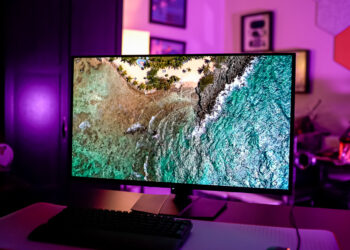Creating a home theater can transform your media experience, allowing you to enjoy movies, games, and shows just as you would in a commercial cinema—right in your living room. However, building your perfect home theater requires some planning and specific equipment. Below are the fundamental components needed to set up an impressive home theater.
Choosing the Right Space
Before diving into equipment, selecting an appropriate space is essential. Here’s what to consider:
- Size of the Room: Ensure the room is large enough for a screen, seating, and acoustic treatment.
- Lighting: Look for a space that can be darkened effectively. Consider blackout curtains or shades to reduce ambient light.
- Layout: Think about the arrangement of furniture and equipment. A rectangular room is often better than a square one for sound distribution.
Essential Components of Home Theater
After determining the space, it’s time to invest in the main elements of your home theater setup.
A/V Receiver
The A/V receiver is the central hub for your home theater system.
- Functionality: It processes audio and video signals, allowing you to switch between devices.
- Channels: Choose a receiver with enough channels to support your surround sound system (typically 5.1 or 7.1).
Display Screen
The right display will significantly affect your viewing experience.
Projector vs. TV:
-
Projector:
- Ideal for larger images.
- Best for dedicated theater rooms.
- Requires a dark room for optimal performance.
ADVERTISEMENT - Television:
- Convenient for multi-purpose rooms.
- Better for bright environments.
- High-definition options like 4K or OLED are recommended.
Audio System
Great audio can elevate your movie-watching experience.
- Speakers: Consider the following configurations:
- Soundbar: Compact and easy to set up; suitable for smaller rooms.
- Surround Sound System: Typically includes:
- Front Speakers
- Center Channel Speaker
- Subwoofer
- Rear Speakers
Cables and Connectivity
Proper cables ensure that your equipment communicates efficiently.
- HDMI Cables: Essential for video and audio signals.
- Speaker Wires: Needed for connecting speakers to the receiver.
- Power Cords: Check for sufficient outlets and power strips.
Comfortable Seating
Comfortable seating can make or break your home theater experience.
- Recliners: Offers comfort and support for long viewing sessions.
- Theater-Style Seats: Designed for true cinema enjoyment; might include cup holders.
- General Seating: Sofas and sectionals can be suitable for casual settings.
Lighting Design
Lighting plays a pivotal role in creating the right mood for watching films.
- Dimmer Switches: Allows for adjustable lighting levels.
- Smart Lighting: Can be controlled via apps for customized atmosphere.
- Accent Lighting: Use LED strips or spotlights to enhance the space without causing glare on the screen.
Additional Enhancements
Consider these extras to improve your home theater experience:
- Streaming Device: A device like Roku, Apple TV, or Amazon Fire Stick caters to various streaming services.
- Universal Remote Control: Simplifies the operation of multiple devices.
- Acoustic Treatments: Sound panels and carpets can help dampen sound reflections and improve overall audio quality.
Setting Up a Home Network
A strong home network is vital for streaming and device connectivity.
- Wi-Fi Router: Ensure it offers enough bandwidth for streaming high-definition content.
- Ethernet Cables: For more stable connections, especially for devices often used for streaming.
Calibration
Once the setup is complete, consider calibrating your system:
- Speaker Placement: Adjust positioning for optimal sound balance.
- Video Calibration: Fine-tune settings for color accuracy, brightness, and contrast.
- Room Acoustics: Make adjustments based on how sound interacts with your space.
By carefully considering each of these components, you can create a home theater that not only matches your aesthetic preferences but also delivers high-quality audio-visual experiences. Enjoy setting up your space and preparing for countless movie nights!






